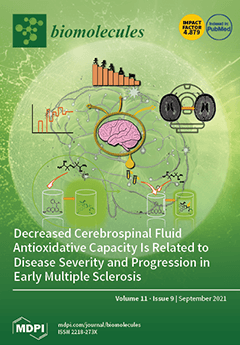Insulin-like growth factor-1 (IGF-1) bioavailability in pregnancy is governed by IGF binding protein (IGFBP-1) and its phosphorylation, which enhances the affinity of IGFBP-1 for the growth factor. The decidua is the predominant source of maternal IGFBP-1; however, the mechanisms regulating decidual IGFBP-1 secretion/phosphorylation
[...] Read more.
Insulin-like growth factor-1 (IGF-1) bioavailability in pregnancy is governed by IGF binding protein (IGFBP-1) and its phosphorylation, which enhances the affinity of IGFBP-1 for the growth factor. The decidua is the predominant source of maternal IGFBP-1; however, the mechanisms regulating decidual IGFBP-1 secretion/phosphorylation are poorly understood. Using decidualized primary human endometrial stromal cells (HESCs) from first-trimester placenta, we tested the hypothesis that mTORC1 signaling mechanistically links hypoxia to decidual IGFBP-1 secretion/phosphorylation. Hypoxia inhibited mechanistic target of rapamycin (mTORC1) (p-P70-S6K/Thr389, −47%,
p = 0.038; p-4E-BP1/Thr70, −55%,
p = 0.012) and increased IGFBP-1 (total, +35%,
p = 0.005; phosphorylated, Ser101/+82%,
p = 0.018; Ser119/+88%,
p = 0.039; Ser 169/+157%,
p = 0.019). Targeted parallel reaction monitoring-mass spectrometry (PRM-MS) additionally demonstrated markedly increased dual IGFBP-1 phosphorylation (pSer98+Ser101; pSer169+Ser174) in hypoxia. IGFBP-1 hyperphosphorylation inhibited IGF-1 receptor autophosphorylation/ Tyr1135 (−29%,
p = 0.002). Furthermore, silencing of tuberous sclerosis complex 2 (TSC2) activated mTORC1 (p-P70-S6K/Thr389, +68%,
p = 0.038; p-4E-BP1/Thr70, +30%,
p = 0.002) and reduced total/site-specific IGFBP-1 phosphorylation. Importantly, TSC2 siRNA prevented inhibition of mTORC1 and the increase in secretion/site-specific IGFBP-1 phosphorylation in hypoxia. PRM-MS indicated concomitant changes in protein kinase autophosphorylation (CK2/Tyr182; PKC/Thr497; PKC/Ser657). Overall, mTORC1 signaling mechanistically links hypoxia to IGFBP-1 secretion/phosphorylation in primary HESC, implicating decidual mTORC1 inhibition as a novel mechanism linking uteroplacental hypoxia to fetal growth restriction.
Full article






